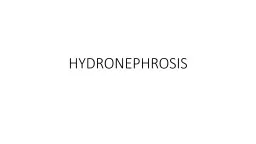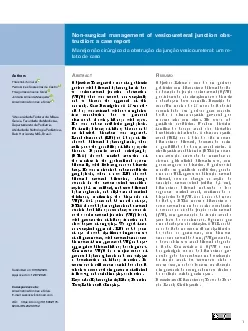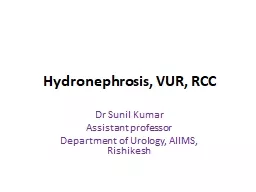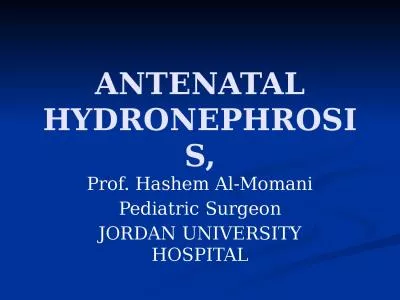PPT-HYDRONEPHROSIS & VESICOURETERAL REFLUX
Author : lindy-dunigan | Published Date : 2017-12-26
Dr Farhanul Huda Associate Professor Dept Of Surgery AIIMS Rishikesh HYDRONEPHROSIS A 32yearold pregnant woman presents to the ER with right sided flank pain Renal
Presentation Embed Code
Download Presentation
Download Presentation The PPT/PDF document "HYDRONEPHROSIS & VESICOURETERAL REFL..." is the property of its rightful owner. Permission is granted to download and print the materials on this website for personal, non-commercial use only, and to display it on your personal computer provided you do not modify the materials and that you retain all copyright notices contained in the materials. By downloading content from our website, you accept the terms of this agreement.
HYDRONEPHROSIS & VESICOURETERAL REFLUX: Transcript
Download Rules Of Document
"HYDRONEPHROSIS & VESICOURETERAL REFLUX"The content belongs to its owner. You may download and print it for personal use, without modification, and keep all copyright notices. By downloading, you agree to these terms.
Related Documents














